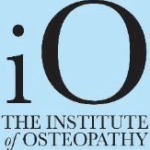Topical Steroid Withdrawal (TSW) is a condition that can arise after prolonged use of steroid creams, commonly prescribed for skin conditions like eczema, dermatitis, and psoriasis. While these creams are effective in reducing inflammation in the short term, long-term use can lead to serious complications, including dependency on the medication and worsening symptoms when the treatment is stopped.
What Causes Topical Steroid Withdrawal?
Steroid creams suppress the body’s natural inflammatory response, providing immediate relief from symptoms like itching and swelling. However, over time, the skin can become dependent on these medications. When the creams are discontinued, the body struggles to regulate inflammation on its own, leading to a severe withdrawal process known as TSW.
Our skin, the body’s largest organ, absorbs topical treatments readily. This means that potent creams like steroids can have far-reaching effects. Long-term use can damage the skin’s barrier, leading to thinning, sensitivity, and increased risk of infections.
Signs and Symptoms of Topical Steroid Withdrawal
People experiencing TSW often go through a range of uncomfortable and painful symptoms, including:
- Red, brown, or black skin, particularly on the arms and legs
- Intense, deep itching
- Burning, painful, and extremely sensitive skin
- Severe skin flaking, oozing, and weeping wounds
- Swelling and lymphedema (swollen lymph nodes)
- Difficulty regulating body temperature
- Severe insomnia, often leading to chronic fatigue
- Reduced mobility, physical disability, and difficulty with daily activities
- Extreme emotional and physical stress
TSW can be debilitating, affecting both physical and mental health, and making even simple tasks feel overwhelming.
Who Is at Risk for TSW?
Certain factors may increase the risk of developing TSW, such as:
- Age: Younger individuals may be more susceptible.
- Gender: Women appear to be at higher risk.
- History of Skin Conditions: People with chronic inflammatory skin conditions like eczema, dermatitis, or psoriasis may be more vulnerable.
How to Manage TSW
While TSW can be challenging, there are steps you can take to manage the symptoms and support your body’s healing process. Here are some practical strategies:
1. Set Boundaries
Ensure you’re giving yourself time and space to rest. TSW recovery is demanding, both physically and emotionally, so setting boundaries with work, family, and social commitments can be essential for healing.
2. Prioritize Rest
Rest is crucial for recovery. Allow your body the time it needs to heal, and don’t feel guilty about taking breaks or stepping back from your usual routine.
3. Wear Comfortable Clothing
Opt for breathable fabrics like bamboo or cotton, as synthetic materials can irritate sensitive skin. Loose-fitting clothes will help minimize discomfort from itching and flaking.
4. Use Non-Bio Detergent
Switch to a non-biological detergent to avoid harsh chemicals that could aggravate your skin further.
5. Reduce Environmental Toxins
Keep your living environment as clean as possible, minimizing exposure to dust, mould, and other irritants that can worsen inflammation.
6. Incorporate Gentle Exercise
While physical activity can be difficult during TSW, light exercise like walking or stretching can help boost circulation and improve mood.
7. Use Cold and Hot Packs
Cold packs can help soothe itching and reduce swelling, while heat packs can relieve muscle aches and stiffness. Alternating between the two may provide some relief.
In Conclusion
Topical Steroid Withdrawal is a complex condition with both physical and emotional tolls. Understanding the risks and symptoms can help those affected take proactive steps to manage their recovery. If you or someone you know is going through TSW, be patient with the healing process, seek support when needed, and remember that healing takes time.





